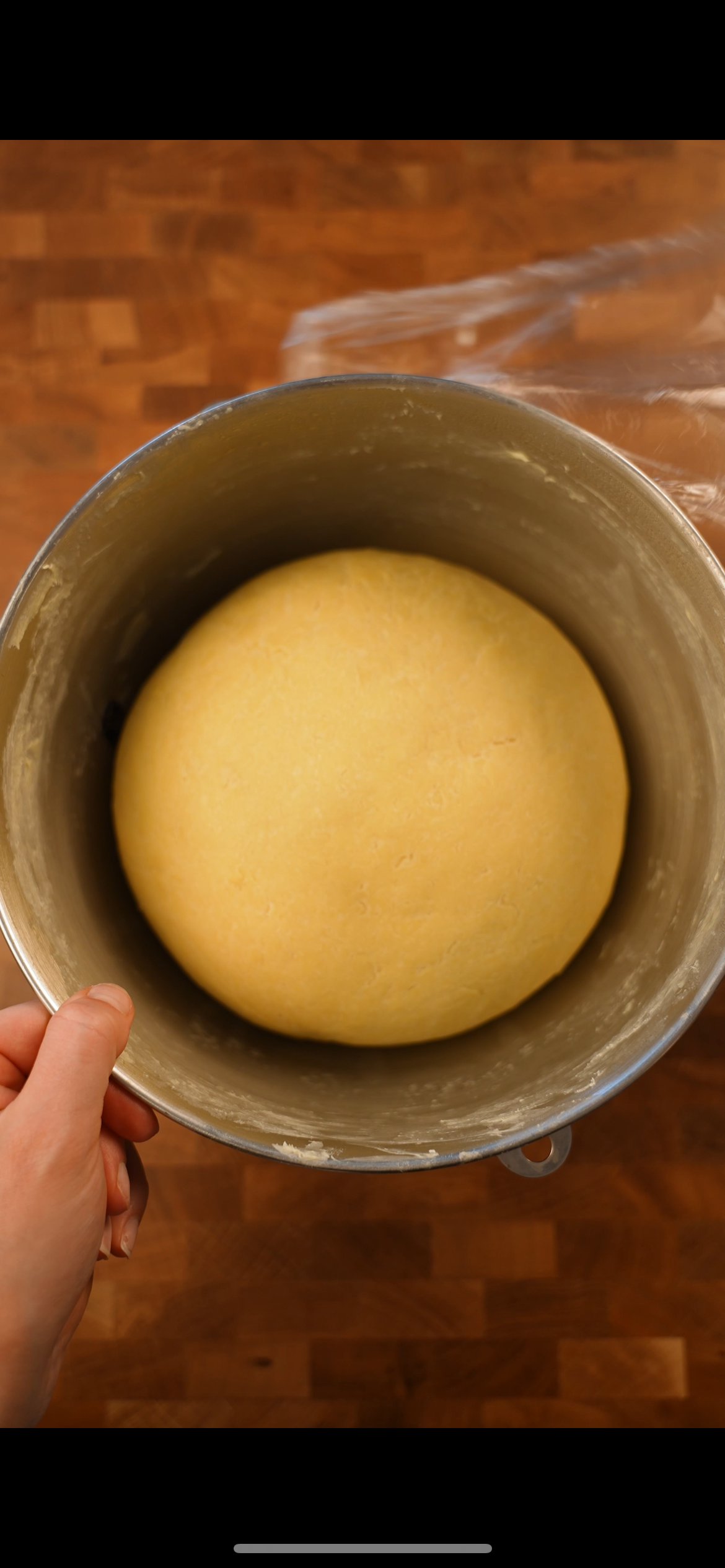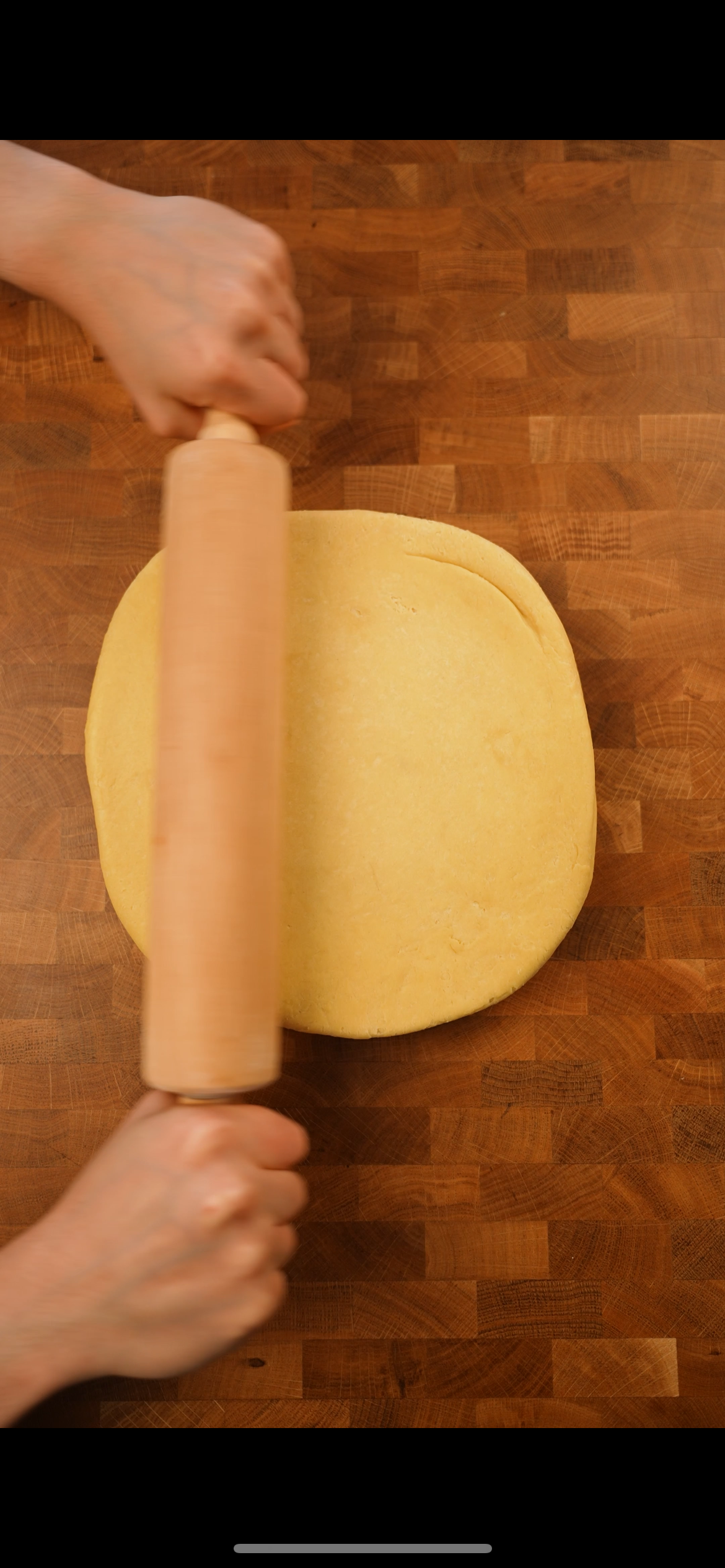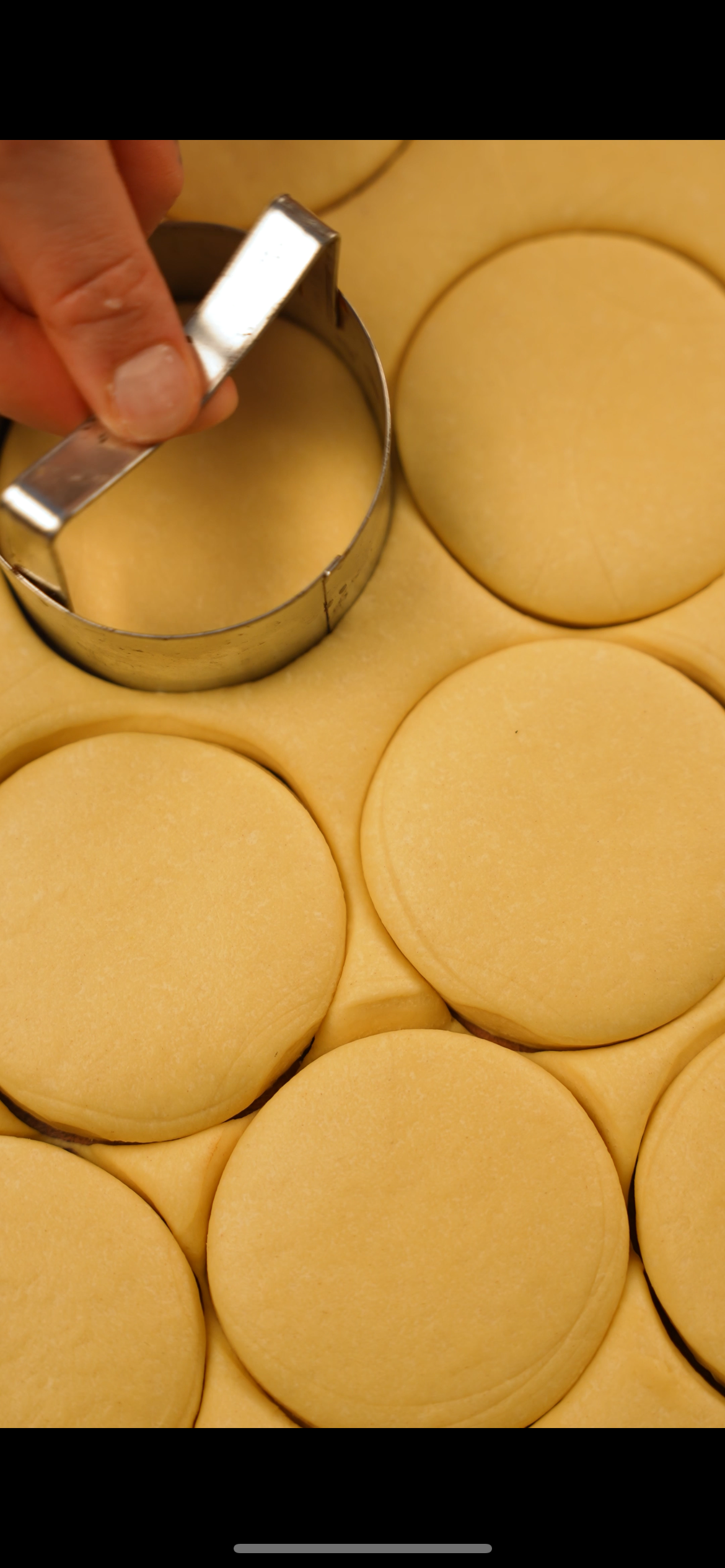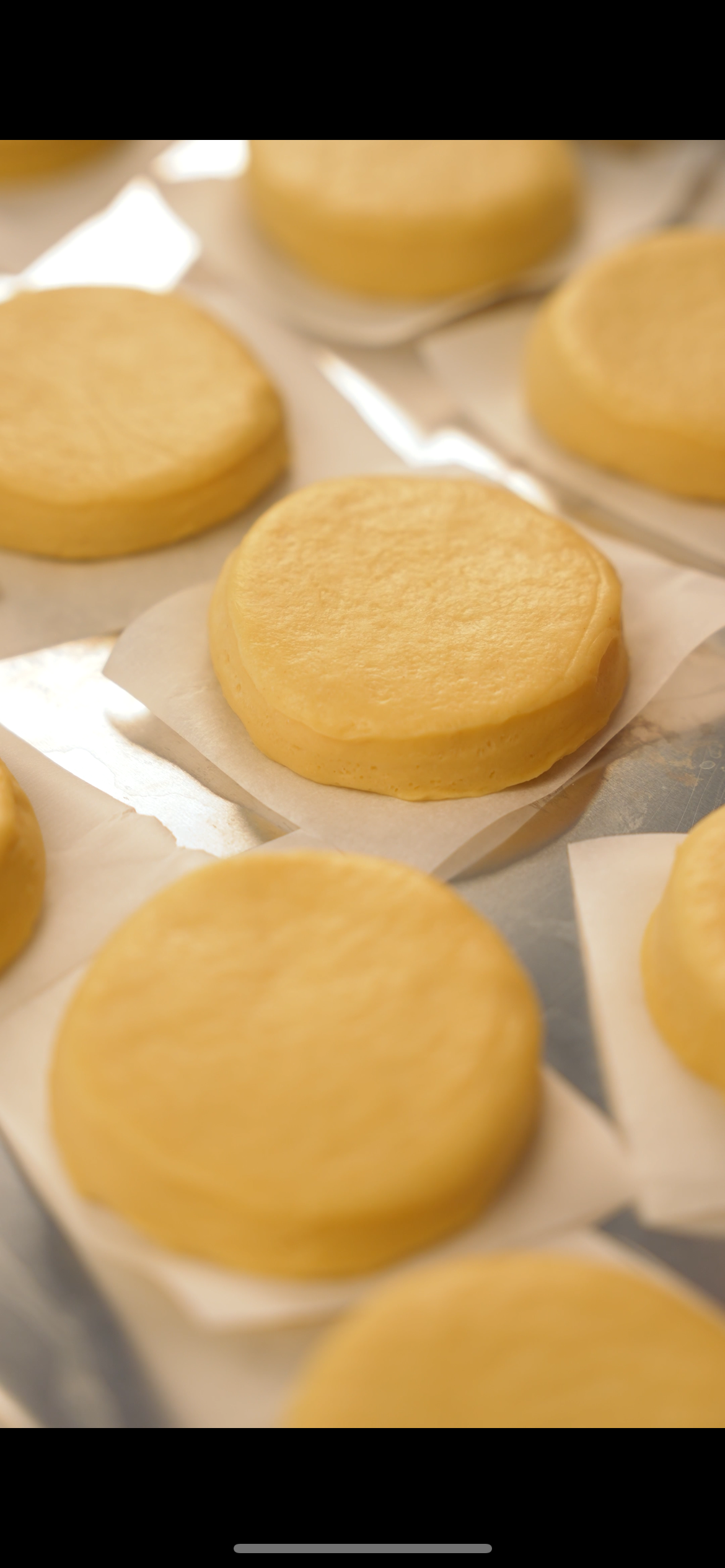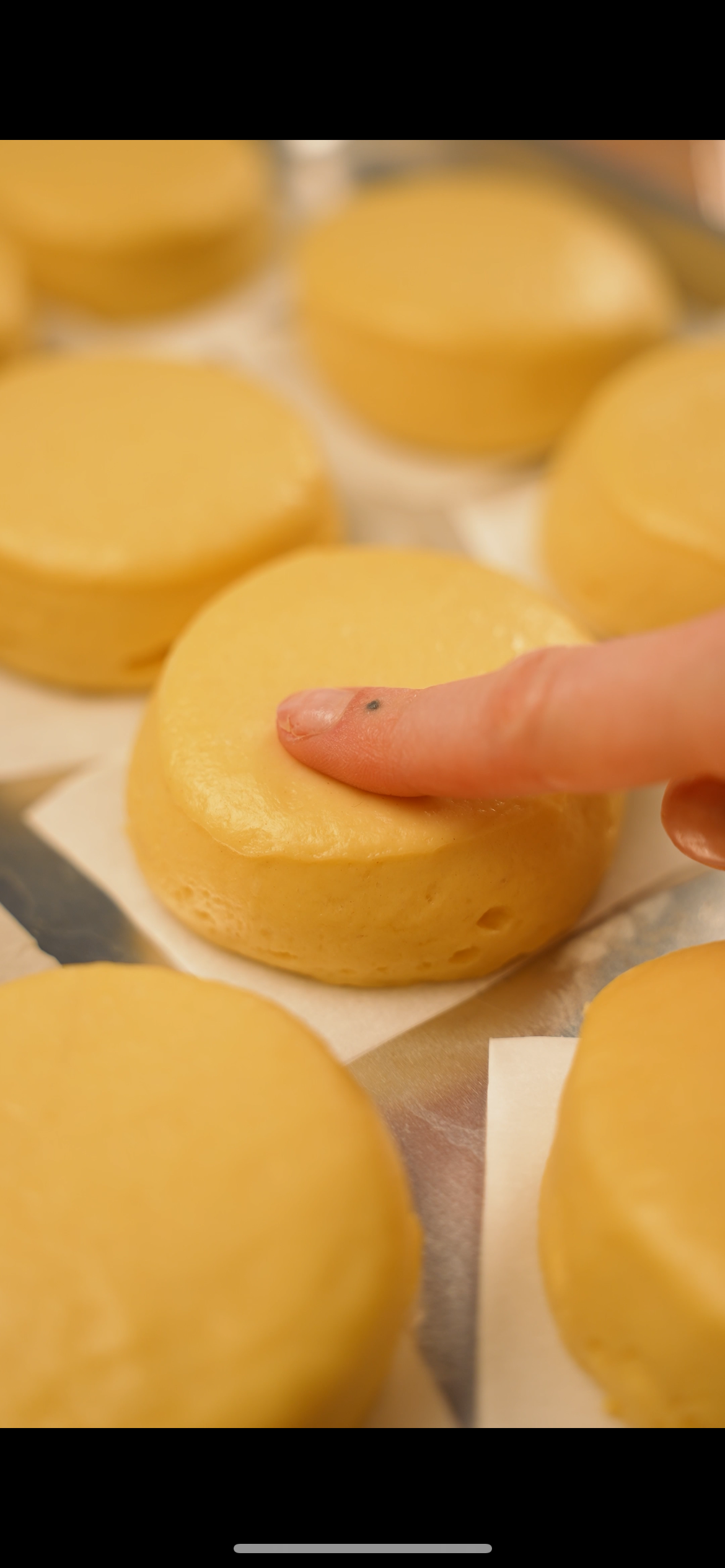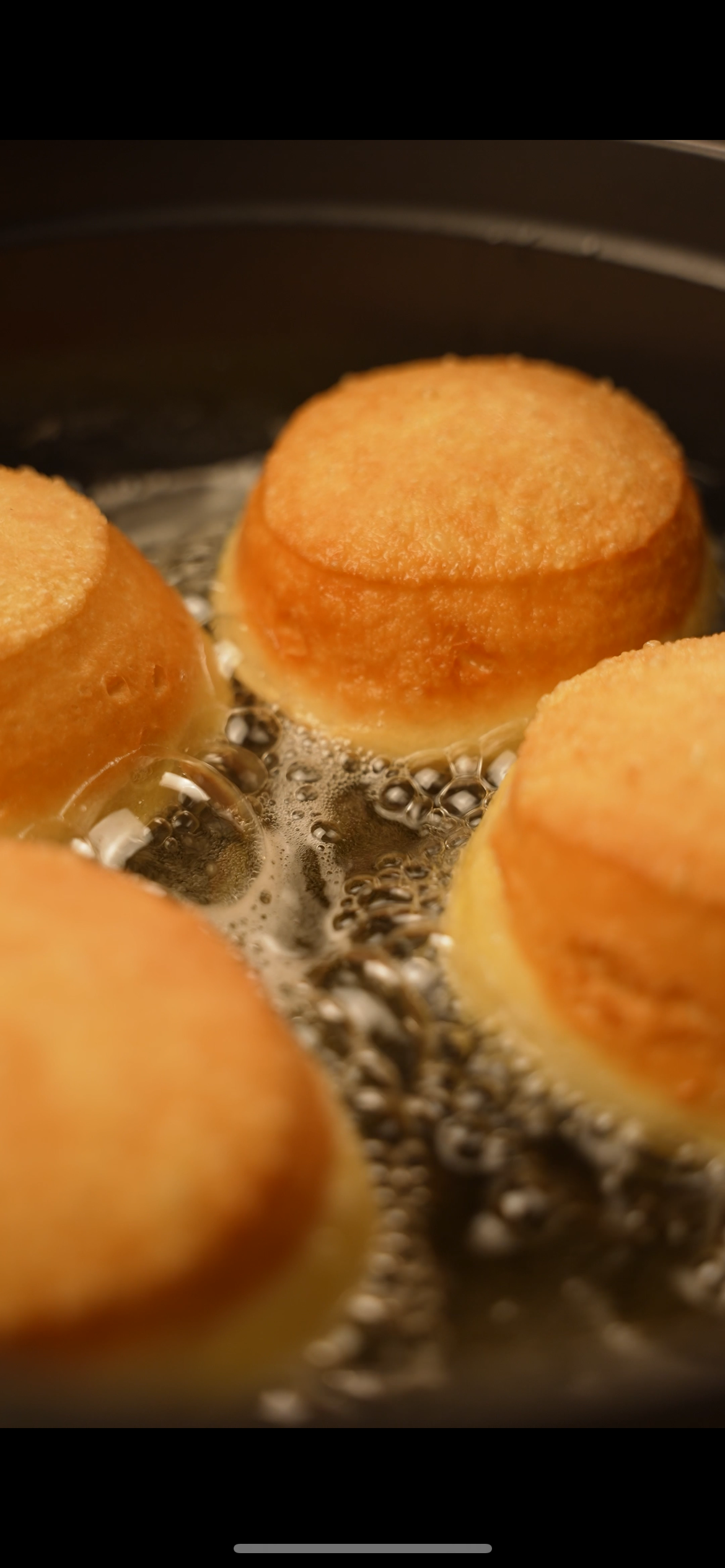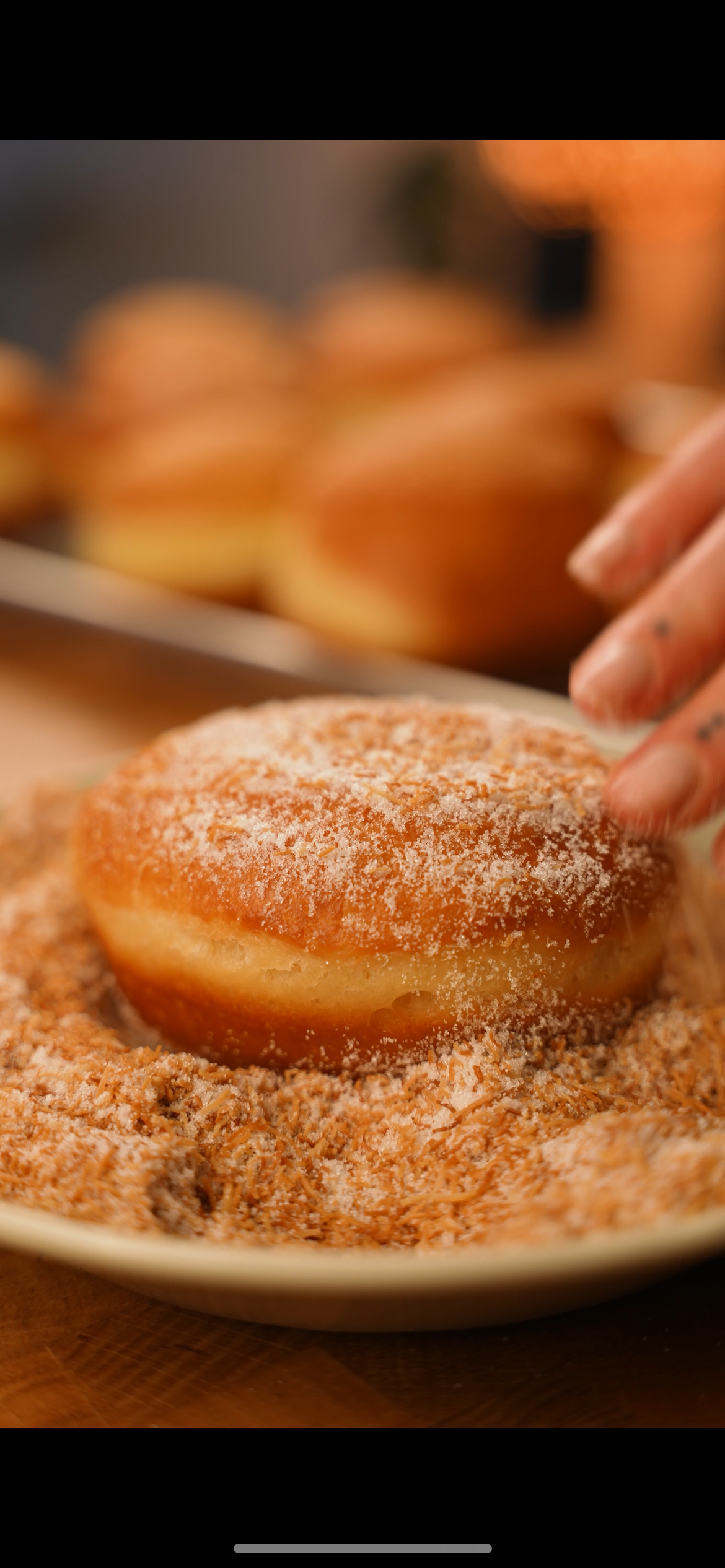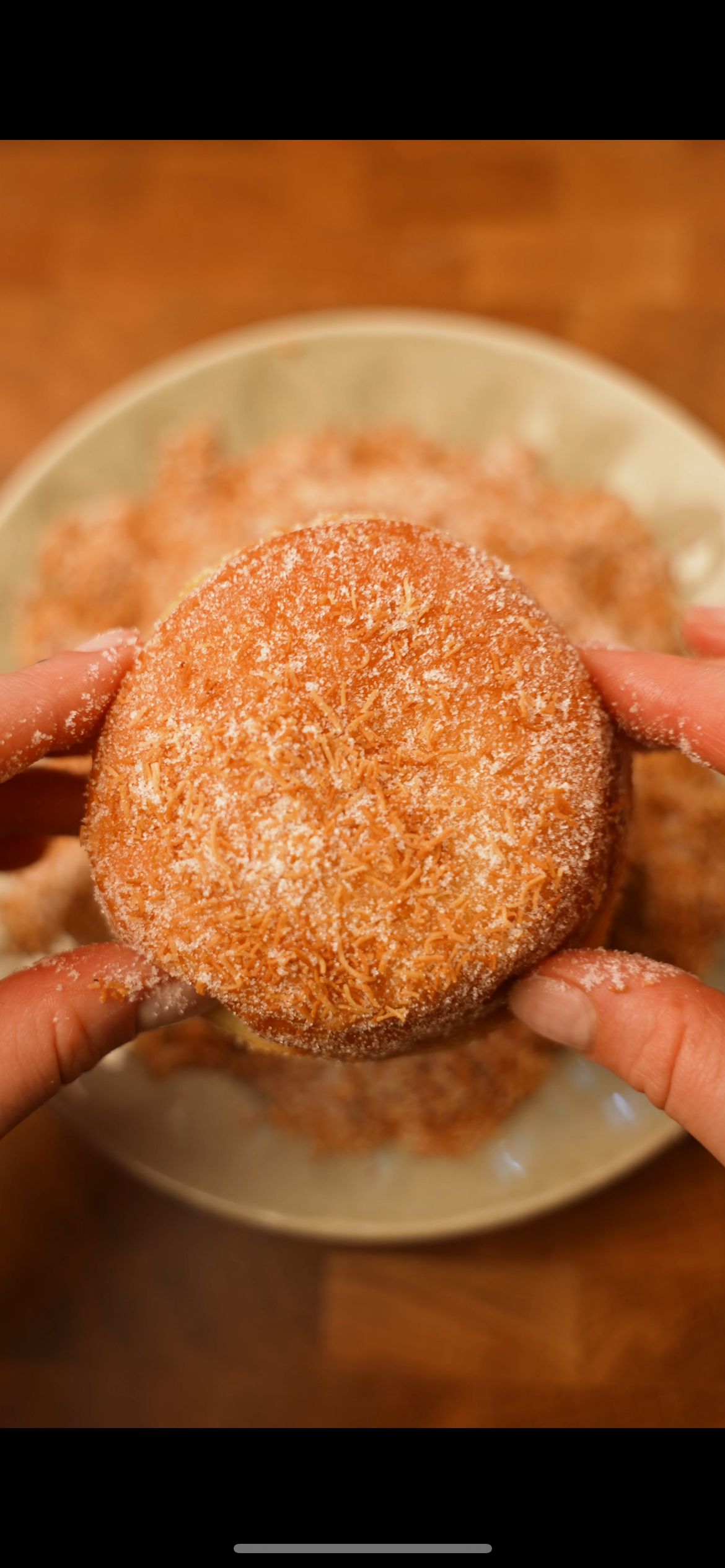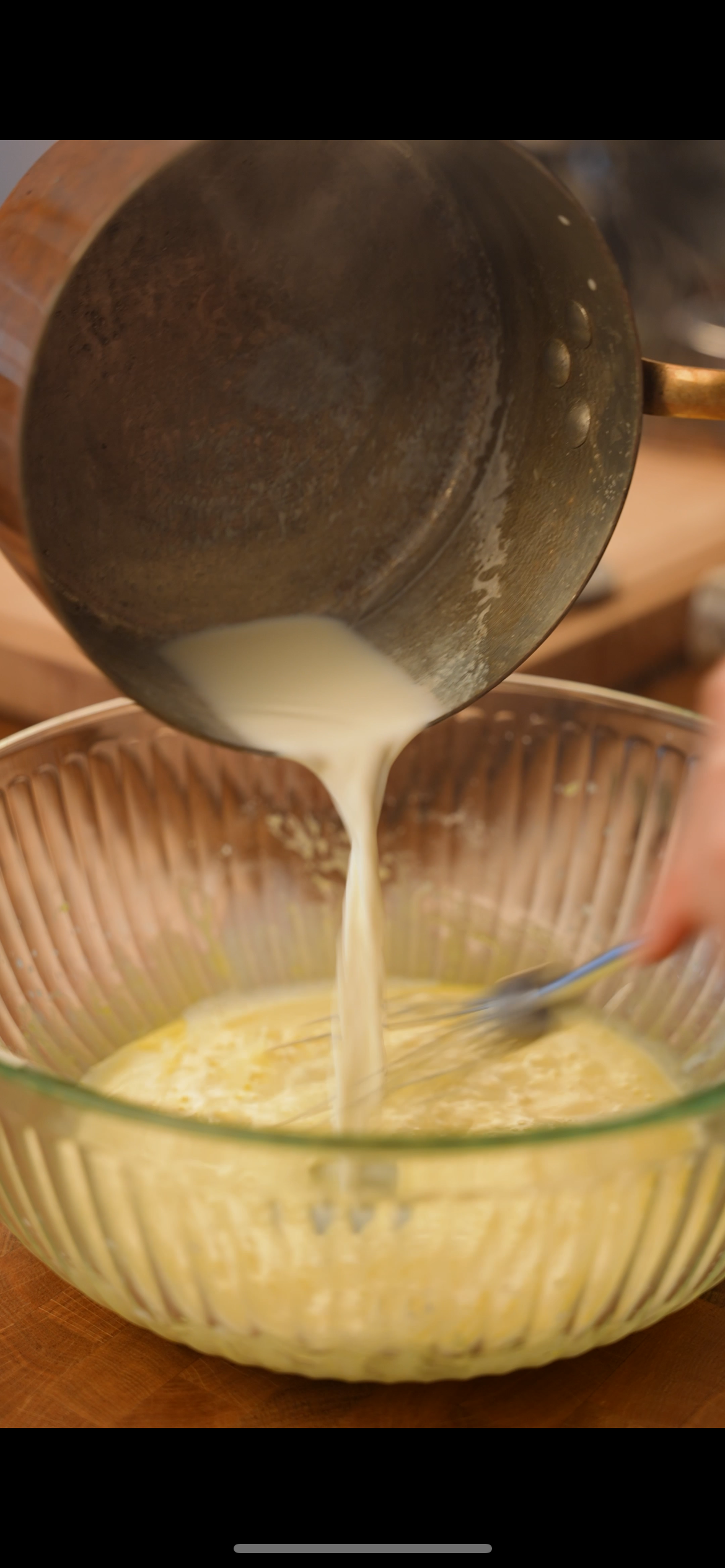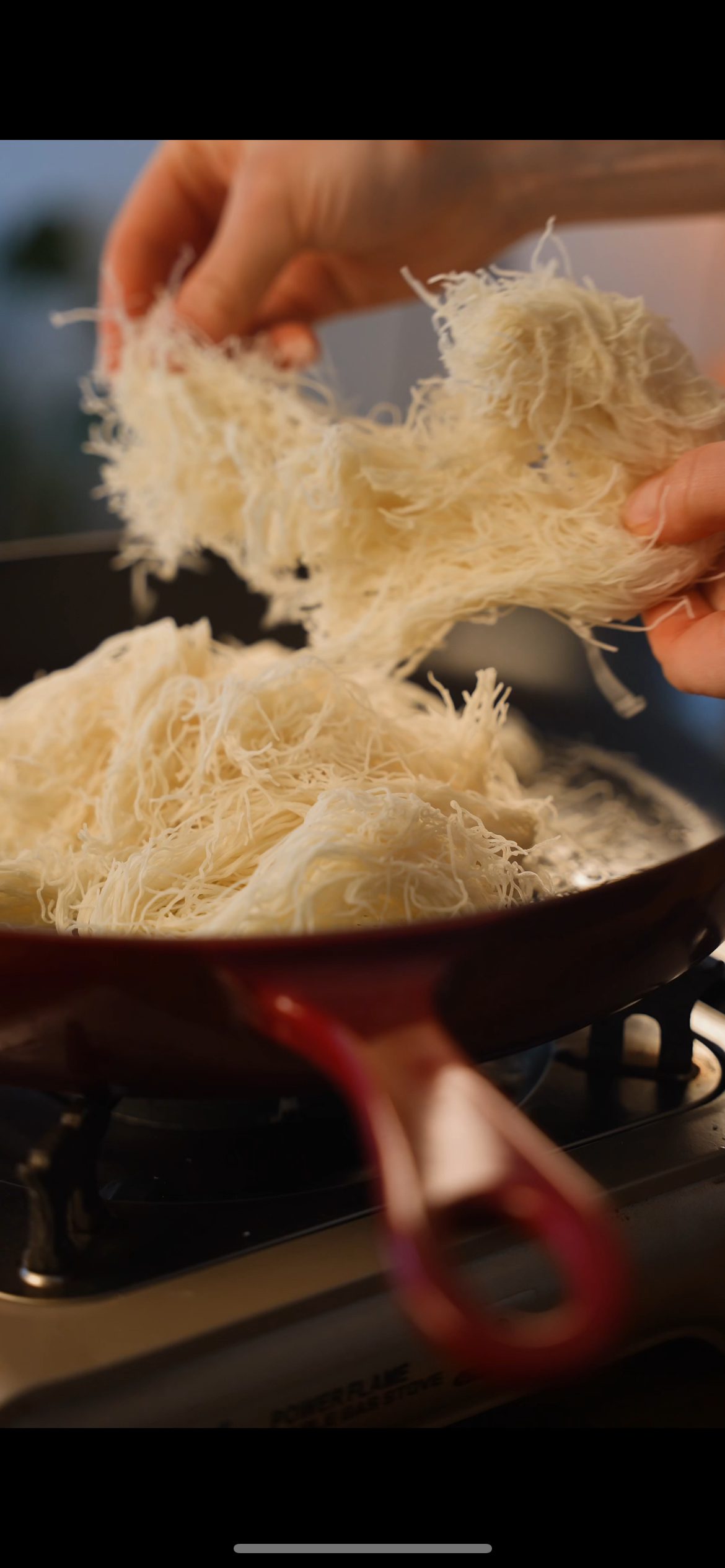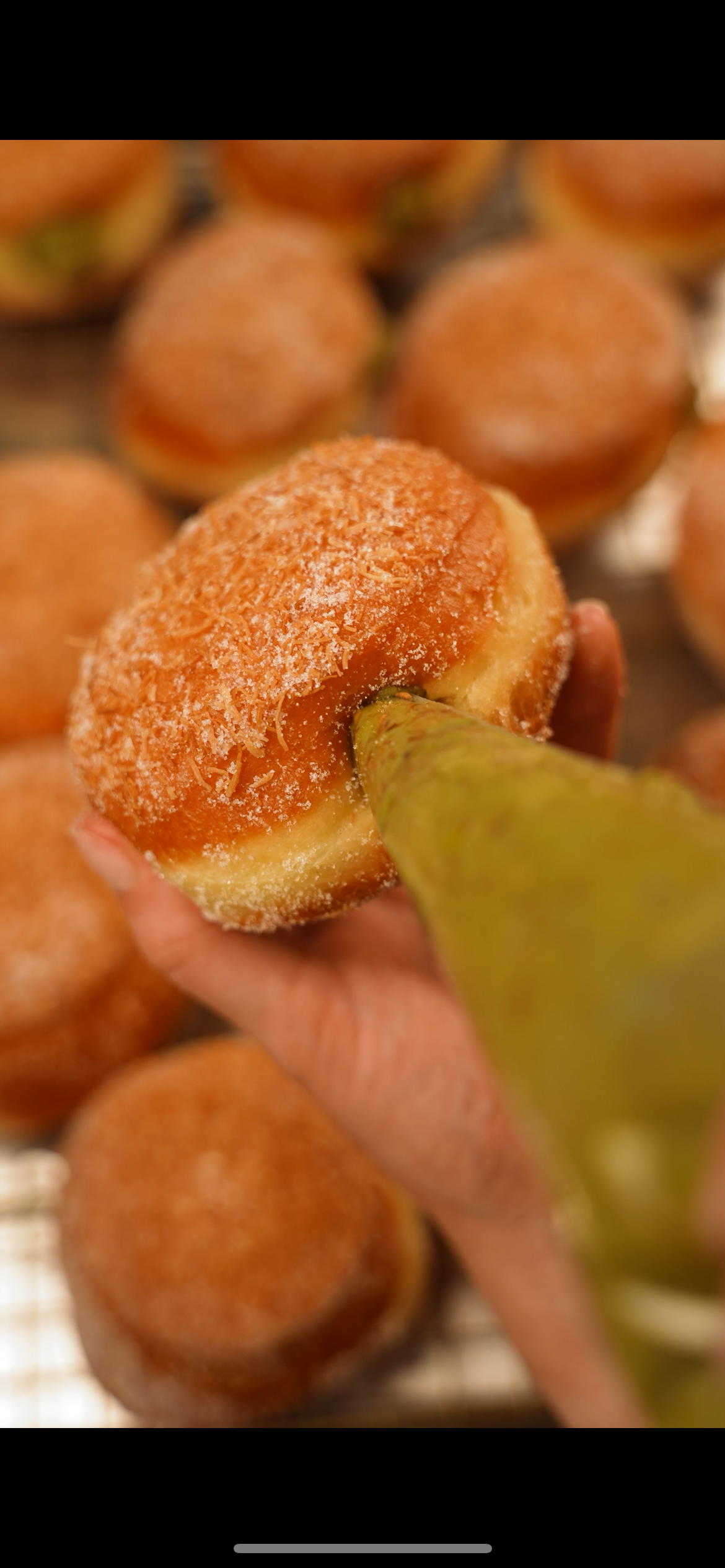Dubai Donuts: Pistachio & Knafeh
There’s been a chocolate bar that’s been sweeping the socials.
If you’re one of those rare individuals who is NOT chronically online, you may have no clue what I’m talking about.
This chocolate bar in question comes from Dubai. Why is it so popular?
Well, the inside is filled with pistachio cream and bits of toasted kataifi pastry. It’s extreme. It’s decadent. And a chocolate lover’s dream.
So far I’ve seen this on every platform; from recipes, to mukbangs to renditions in different desserts— people are in love with this chocolate bar.
And it seems only logical to give it a go myself, but in Donut form.
Hold the applause I know. Brilliant idea.
Pistachio filled donuts are one of my FAVES. And this is only a step up from that. A fluffy brioche donut, filled with a pistachio pastry cream with kataifi pastry folded in. This dessert is a textural heaven.
I hope you give it a go!
This recipe was made in collaborating with Staub! I used their 5L Cocotte and their 10” Cast Iron Fry Pan in the creation of this recipe! Check out more of their reliable products here.
Recipe:
Makes 16 donuts
Supplies you’ll need to make your life easier:
Electric Stand Mixer (with hook attachment)
Dutch Oven or Cocotte, for Frying
Parchment Paper
Rolling Pin
Spider Strainer
Wire Rack
Brioche Donuts:
4 cups bread flour
1/3 cup sugar
1/2 tsp salt
1 tsp instant dry yeast
1/3 cup warm milk
5 eggs +1 yolk
8oz softened unsalted butter, cubed
2L neutral oil, for frying
1/3 cup sugar (for coating)
1/4 cup toasted kataifi pastry (for coating)
For the dough:
In a stand mixer fitted with a hook attachment (or if doing by hand— in a large bowl) add your flour, sugar and salt. Stir to combine and make a well in the centre.
In a small bowl or measuring cup, add your milk and microwave to reach 100 degrees F (37 degrees C). Add your instant yeast and stir to combine.
Pour the milk/yeast mixture into the bowl with the flour. Turn the mixer on low and allow it to come together. Scraping down the sides of the bowl until everything is combined. Turn the mixer off, and let the dough rest for 10 minutes, covered.
After resting, turn the mixer back on low. Add the eggs one at a time. Let this knead for about 10-12 minutes.
Add the softened butter, a couple pieces at a time. Allow them to mostly incorporate into the dough before adding more.
Once all the butter has been added, knead the dough for roughly another 8 minutes.
Turn the mixer off and remove the dough from bowl. Place it on the counter, shape and form it into a smooth ball. It should not be very sticky.
Transfer the dough back into the large bowl. Cover with plastic wrap.
Let the dough rise in the fridge for 24 hours.
For the rolling & cutting:
After a day of resting, the dough should have tripled in size!
Dust your work surface with flour before turning out the cold dough onto the table.
Before rolling, prep a baking sheet and 15-16, 4x4” pieces of parchment paper for your cut donuts to be transferred on to.
Roll the dough out to form a rough square shape. It should be about 1/2 inch thick.
Using a 3-4” round cutter, cut 15-16 circles of dough. Try to fit as many cut-outs onto your first roll.
Re-rolling the dough will cause breakage of the donuts and uneven frying. You can save any scraps of dough and cook them separately, or discard.
Transfer each cut out onto its own small piece of parchment paper that you prepped (This is to help with transferring them to the oil for the frying process later). Place them all on a large baking tray.
Cover the donuts lightly with plastic wrap and let them rise for 2 hours at (slightly warm) room temperature or until doubled in size.
In the meantime, prepare the pistachio filling (recipe below).
For the frying:
Once the donuts have been rising for about 2 hours, they should have doubled in size. To test if they are ready, gently poke the tops with your finger. If the dough indents slightly but springs back, it is ready to fry! If it does not, and leaves a dent, allow it to rise for another 30 minutes and check again.
Prepare for frying: In a 3-5L dutch oven, like the Staub Cocotte— add your oil.
Place the pot over high heat. If you have a thermometer, add it to the pot. Allow the oil to reach 330 degrees. Lower the heat under the pot slightly so the oil doesn’t get too hot . You do not want the oil to get hotter than 350 degrees.
Pick up the donut via the piece of parchment paper underneath. Gently place the whole thing (parchment paper and all!) into the oil to fry. The parchment should easily slide right off after placing it in the oil, remove the parchment from the pot and discard.
Fry the donuts in batches of 3-4, depending on how big your pot is.
Fry for 2-3 minutes each side. Flipping them maybe once of twice to get an even browning. There should be a light coloured ring around the middle. Once they reach a nice golden brown, remove them from the oil with a spider strainer or tongs and place them on a wire rack to cool.
Repeat with remaining donuts until they are all fried.
In a small bowl, combine your 1/3 cup sugar and kataifi pastry.
Dunk and roll your slightly cooled donuts in the sugar mixture to fully coat them. Set them aside and allow them to cool completely before filling.
Pistachio Kataifi Pastry Cream:
Important Note: This pastry cream should not be made ahead of time. Once the kataifi is combined into the mixture this should be consumed within a few hours for the best textural results. However, all the components can be prepped ahead separately, and combined when you wish to fill the donuts!
Makes 2 cups
2 egg yolks
2 tbsp sugar
2 tbsp corn starch
3/4 cup milk
2 tbsp whipping cream
1 tsp vanilla extract
2 tbsp salted butter
200g pistachio cream
100 g frozen kataifi pastry, thawed
First, we make a pastry cream: In a medium heatproof bowl, add your egg yolks, sugar and cornstarch. Whisk until the yolks are pale in colour, about 3 minutes.
In a small saucepan, add your milk, cream and vanilla extract. Place over medium heat and bring to just the start of a simmer.
While whisking constantly, add your hot milk to the egg yolk mixture to temper it. Once both are fully combined, pour the mix back into the saucepot. Place it back over medium heat to thicken it.
With a rubber spatula or a whisk, stir the custard constantly until thick. Do not stop stirring! We don’t want lumps!
Once the custard has reached your desired consistency, remove the pot from the heat and pour the thickened custard into a sieve. Pass it though into a medium heatproof bowl. Wrap with plastic wrap, making the surface of the plastic touch the top of the pastry cream. This is so the pastry cream does not form a “skin” as it cools.
Place this in the fridge for 2 hours, or until cold.
After 2 hours, the pastry cream should be cold. Now you can start working on the remainder of the filling.
In a large skillet, like the Staub 10” Cast Iron Fry Pan, add 2 tbsp of butter and set it over medium high heat.
Add your thawed kataifi pastry to the pan. Use your hands to break the pastry into smaller pieces.
Toast the pastry in the pan until evenly golden brown, this may take 10-15 minutes. Careful as to not burn it.
Transfer the toasted kataifi pastry to a medium bowl. Add the 200g pistachio cream and your cooled pastry cream. Fold everything together until fully incorporated.
To fill the donuts:
Once the donuts have cooled and your have your pistachio pastry cream all made, it is time to put it all together!
Transfer your pistachio pastry cream to a large piping bag fitted with a round metal piping tip.
Take one of your donuts and poke a hole in the side, either with your finger or the back end of a knife.
Insert the tip of the piping bag into the hole your just created on the side of the donut. Fill each donut with the pastry cream by applying even pressure to the piping bag. Once you feel some resistance, remove the piping tip from the donut.
Repeat this to fill each donut with the pastry cream!
Storing notes: These will last two days stored in an airtight container at room temperature. But for the best textural results, these should be eaten within 3-4 hours of making the pastry cream, as the kataifi pastry will start to lose its crunch!



